SEAWORDS
TheMarineOptionProgramNewsletter

February2023
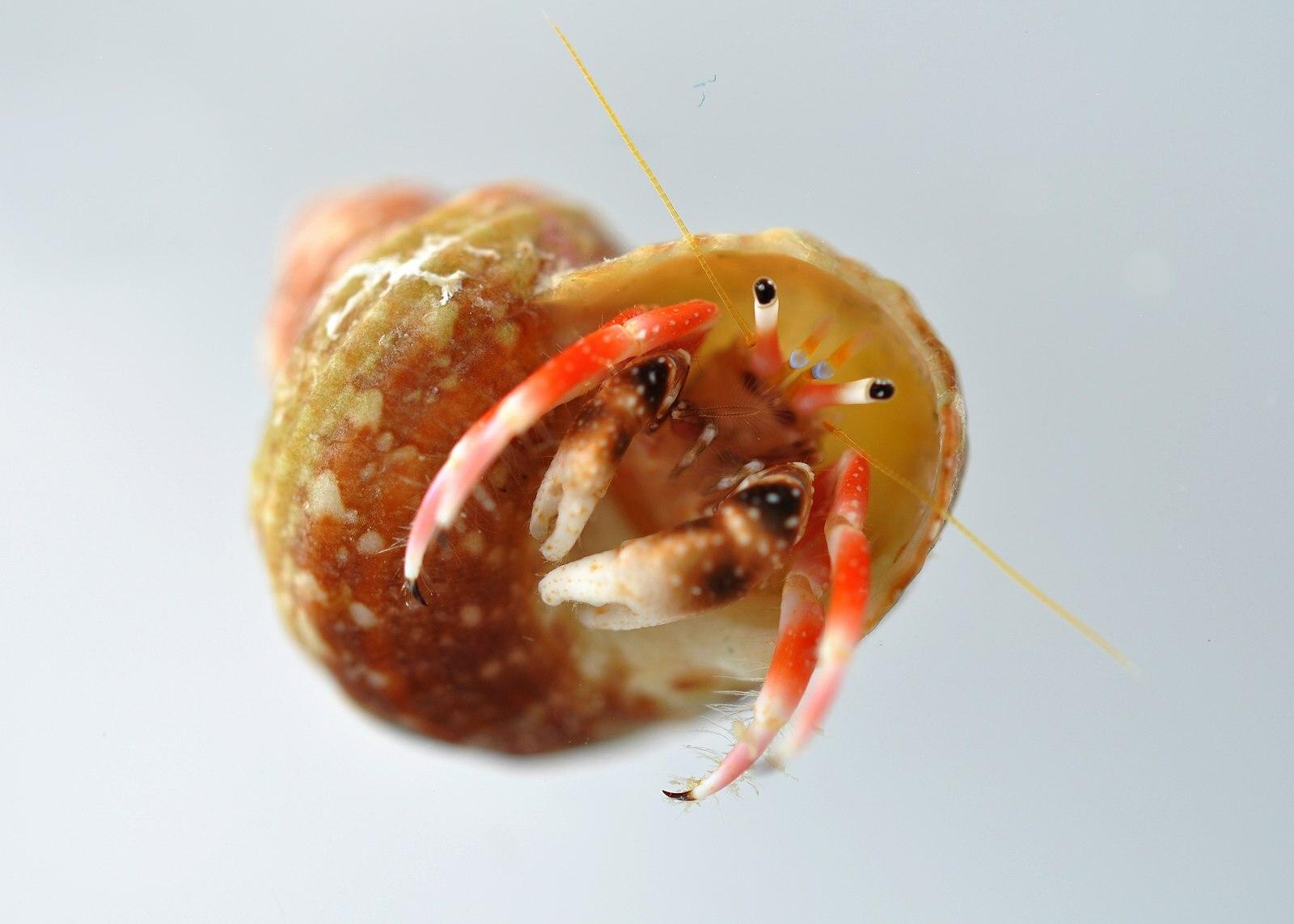
VolumeXXXVIII, Number 2
Aloha and Welcometo theFebruary issueof Seawords!
This month wewelcomeour newest writer, Sara McGhee! Enjoy her articlecovering our Creatureof theMonth on page12. This month's creatureis best known for commandeering mollusc shells to makeits home, you guessed it, it's thehermit crab!
In this issue, read up on Oxygen Minimum Zones and how climatechangecould affect their future(page24), as well as the latest dolphin activity tracking technology (page4), and the effects of coastal tourism on coral reefs (page16).
From a sea spongetackling Covid-19 (page8), to ocean mapping technologies being applied to thesearch for extraterrestrial life(page20), takea step outsidetheworld of ocean organisms and learn how marinescienceis being applied to other fields of study.
What would you liketo seemoreof in Seawords?Send in your thoughts, and follow us on Twitter and Instagram at @mopseawords!
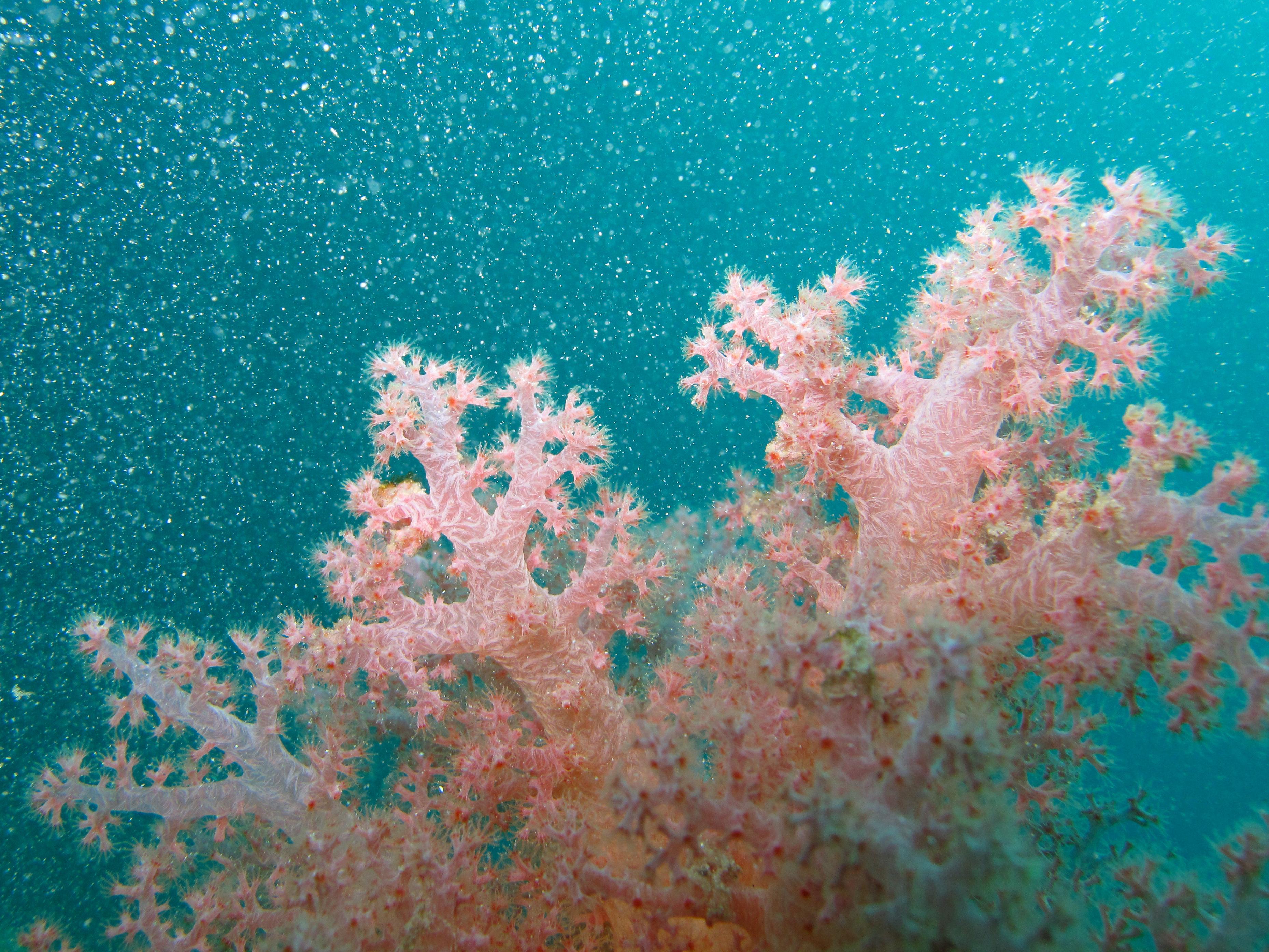 AbbieJeremiah, Seawords Editor
AbbieJeremiah, Seawords Editor
2 | Seawords
Contents
2: Letter From theEditor
4: Dolphin Activity Trackers
8: Covid-Fighting Sponges
12: Creatureof theMonth: Hermit Crab
16: Coastal Tourism & Coral Reef Degradation
20: MarineScienceApplied to Space
24: Oxygen Depletion in theOcean: Not All Bad
28: MOP Calendar
Photo Credits
Front Page: Hermit Crab. Photo by: NOAA Photo Library; Flickr.
Tableof Contents: Soft Pink Coral. Photo by: Thomas Quine; Flickr.
Back Cover: Crown of Thorns- NMSAS Swains Island Expedition. Photo by: Wendy Cover/NOAA; Flickr.

FEBRUARY- PEPELUALI 2023 | 3
Dolphin Activity Trackers
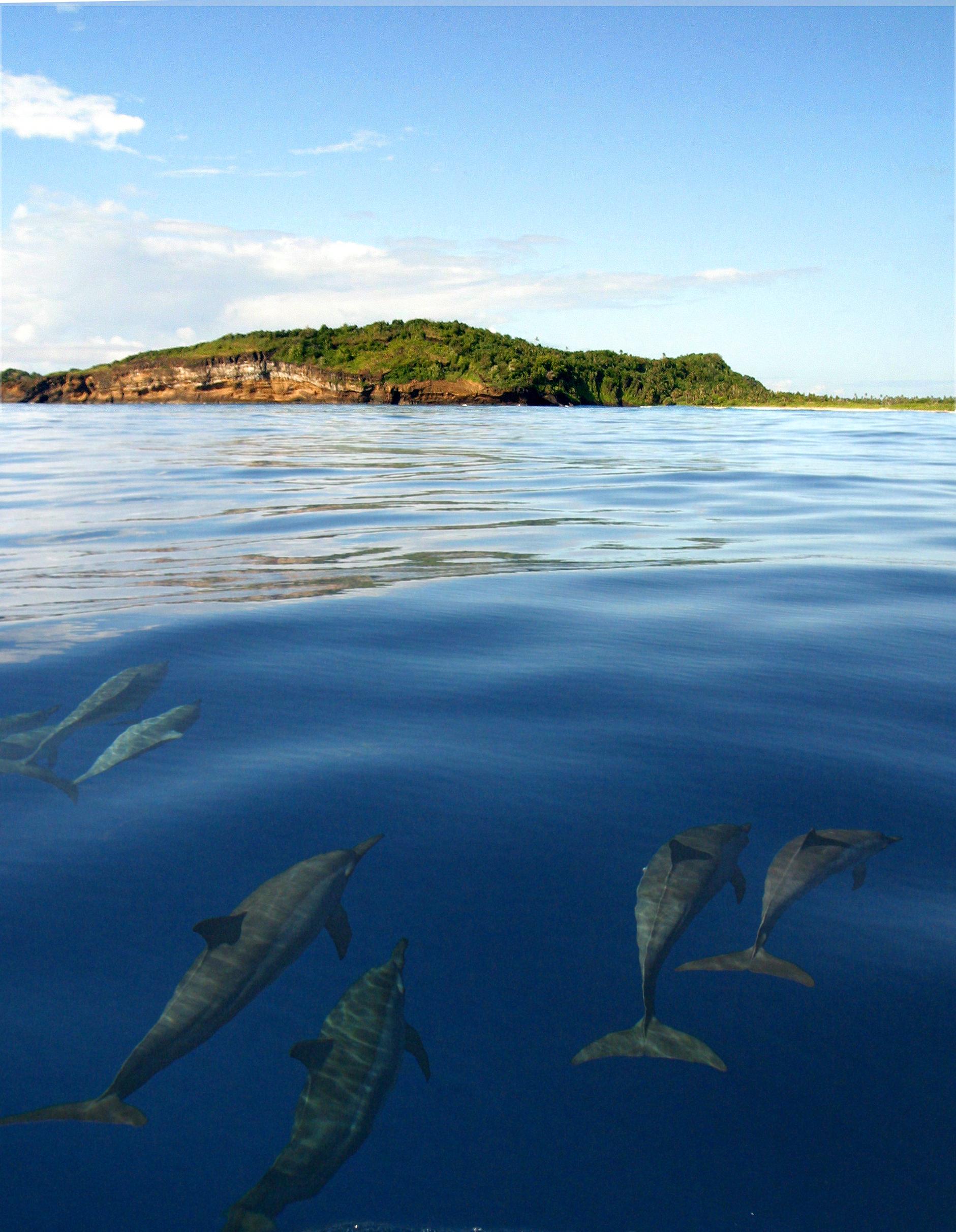 By: Haley Chasin, UHM MOP Alumna
By: Haley Chasin, UHM MOP Alumna
4 | Seawords
SpinnerDolphins.Photo by:Ed Lyman/NOAA;Flickr.
Humans havebeen known to cause disturbances to animals like dolphins. These disturbances includehabitat changes, overfishing, changes in climateand noisepollution from shipping, underwater construction, oil exploration and navy sonar. Disturbances likethis can affect their socialization and feeding behaviors.

In order to investigate movement in bottlenose dolphin (Tursiops truncatus) scientists have gonefrom camera-based technologies to wearable technologies called biologging tags that sit between theblowholeand thedorsal fins. Thetag is similar to a fitness tracker but instead of measuring how many calories a person consumes during exercise, it can measurehow much
energy an animal uses when they swim by measuring the swimming behavior including kinematics, hydrodynamics and propulsivepower. Scientists from the University of Michigan in Ann Arbor ? in collaboration with marine mammal specialists at Dolphin Quest O?ahu in Hawai?i wereableto comeup with thesetechnologies. Six animals wereused to measurethedata. Swimming mechanics over a rangeof speeds (1.9-6.1 m/s) and propulsivepower ranged from 66 W to 3.8 kW over 282 total trials. Thedolphins swam at depths that reduced wavedrag during their speed changes. Data also examined how different movement behaviors weremoreor less energetically efficient and effortless. Theresults indicated that thedolphins
FEBRUARY- PEPELUALI 2023 | 5
usea combination of depth and swimming speed to becomethemost efficient. Thedata areused to determinehow much energy is used to catch fishes and how many they catch in a day to compare theseresults from when dolphins are disturbed.
Theanimals' well-being and population dynamics are important. With this new technology humans can becomemoreinformed on how weareaffecting these animals to better manage them. Other researchers from DukeUniversity and the Oceanogràfic Foundation of Valencia (Spain), in collaboration with Dolphin Quest areworking to estimate energy used during movement and oxygen consumption. Their hopeis to develop a moreadaptablespeed sensor and energetic monitoring for a wider variety of animals.

6 | Seawords
Dolphinsat Kealakekua Bay.Photo by:Doug Finney; Flickr.

FEBRUARY- PEPELUALI 2023 | 7
Covid-Fighting Sponges
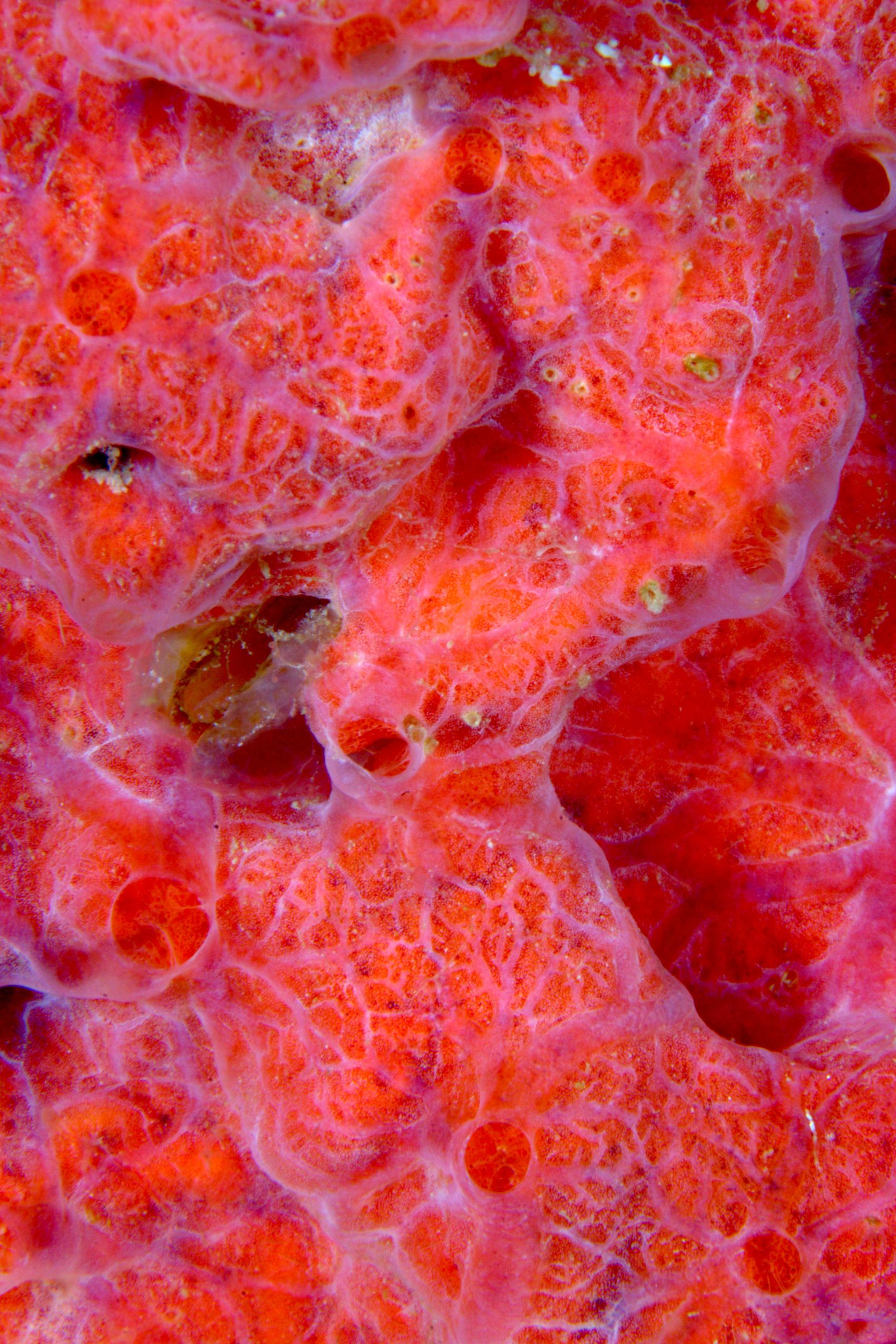 By: SofiaFlores-Pina, UHMMOPStudent
Sponge Surface.
By: SofiaFlores-Pina, UHMMOPStudent
Sponge Surface.
8 | Seawords
Photo by: KlausStiefel;Flickr.
With the evolution of the coronavirus and the emergence of new variants, the efficacy of COVID-19 vaccines has begun to diminish. Variants of concern such as Omicron and Delta are little affected by monoclonal antibodies present in current pan-coronavirus vaccines. Monoclonal antibodies (mAbs), target SARS-CoV-2 spike protein while treating infection.
However, anti-SARS-CoV-2 mAbs have drastically different effects on variants and subvariants. Highly pathogenic variants of Delta and the highly transmissible Omicron variants and subvariants have led to widespread infection and hospitalization; inoculated individuals included. As the coronavirus adapts, so too
must the methods to combat it.
Researchers at the University of British Columbia (UBC) have been investigating the capabilities of natural products in fighting covid properties. The team collected 373 compounds obtained from fungi, bacteria, plants, and marine sponges. The antiviral effects of the 373 natural products were evaluated using the mNeonGreen (mNG) reporter SARS-CoV-2 virus in a lung epithelial cell line. The human lung cells were bathed in a solution from a compound, then exposed to SARS-CoV-2. Once infected, the cells turned fluorescent green. Of the 373 natural compounds, 26 had some capacity for antiviral defense against select variants. Three of the
FEBRUARY- PEPELUALI 2023 | 9
compounds, however, were very effective in fighting against Delta variants and most omicron variants.
Found in Howe Sound, British Columbia, Alotaketal C, was derived from a sea sponge. Also found in Canada, Bafilomycin D and Holyrine A were derived from marine bacteria found in Barkley Sound, British Columbia, and Newfoundland. These three compounds have potent inhibitors of coronavirus, namely omicron subvariants BA.5 and BA.2. Dr. François Jean, an associate professor in the Department of Microbiology and Immunology at UBC, speculates that natural products will play a significant role in the development of new preventative medications against Covid-19 as well as other respiratory infections.
While this discovery remains in the early stages of research, animal testing and clinical trials are the next courses of action, says Dr. Jimena Pérez-Vargas, an associate professor of immunology and microbiology at UBC. According to Raymond Anderson, a professor in the Chemistry Department at UBC, treatment would likely come in the form of a pill or nasal spray rather than by an injection.
The discovery of the remarkable antiviral properties present in natural products has the potential to save lives worldwide.
Furthermore, this discovery demonstrates the importance of understanding natural products while suggesting we still have much to learn from them.
10 | Seawords
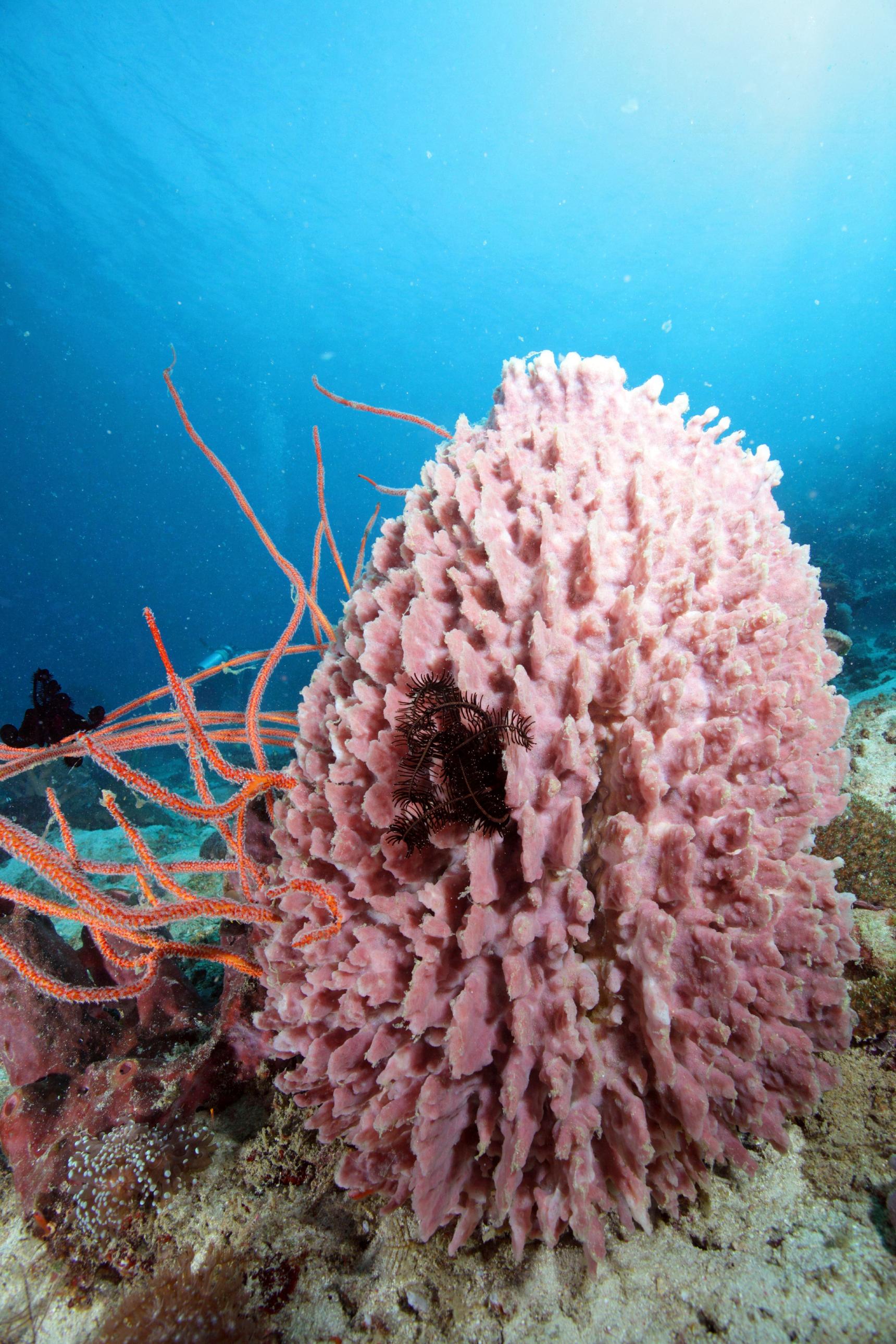
FEBRUARY- PEPELUALI 2023 | 11
Barrel Sponge.Photo by: KlausStiefel;Flickr.
Hermit Crab Creatureof theMonth:
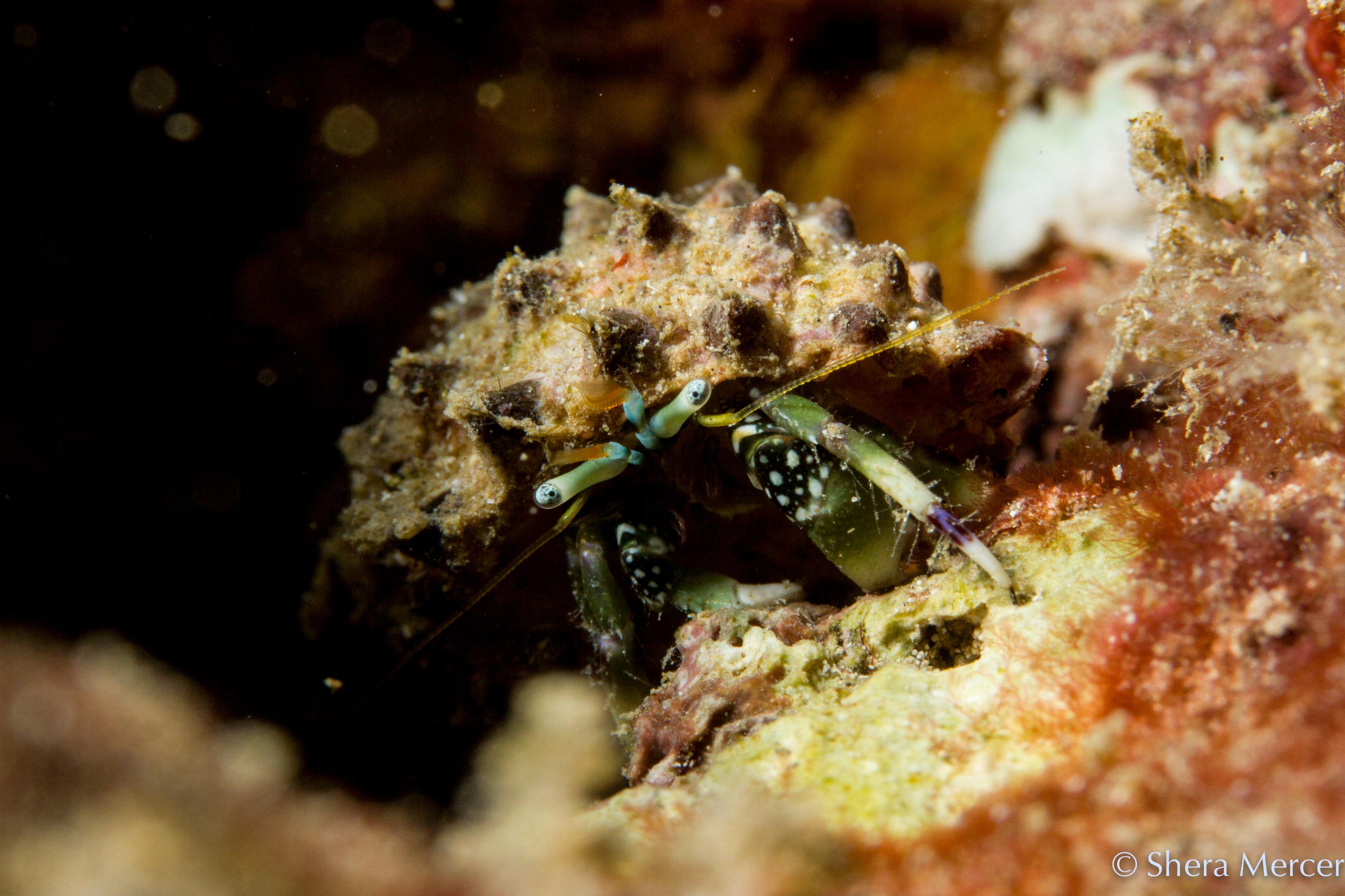 By:SaraMcGhee,UHMMOPStudent
By:SaraMcGhee,UHMMOPStudent
12 | Seawords
When thinking of a hermit crab, onemay picturetheeasy to carefor pet with a pretty shell. Whilethey do makegreat pets, they arealso a very interesting species uniquefrom other types of crabs. Whilethey are members of theCrustacea subphylum and they arenot truecrabs, dueto their lack of a hard exoskeleton and inability to grow their own shell. Becauseof this, they borrow used shells from molluscs, typically snails. Thesegentlecreatures rarely kill the previous shell owner and haveeven been observed forming a linewith other hermit crabs to seewhich fits thenew shell thebest. They usea small set of limbs to anchor themselves to their new homeand their curved body fits snuggly in the curving architectureof snail shells. They often will examinea potential new shell beforemoving in. However, oncethey find a good fit, they quickly attach themselves to avoid predators taking advantageof their soft exoskeleton. Their nameis quite misleading, becausewhilethey may shelter alonein a shell, they arevery social creatures that can livein groups of over 100 crabs.
Thereareover 800 different species of hermit crabs; six of those

Crab
PacificGolden Plover. Photo by: Geoff Whalan, Flickr.
FEBRUARY- PEPELUALI 2023 | 13
Hermit Crab.Photo by:Shera Mercer;Flickr.
nativeto Hawai?i. Thespecies can bedifferentiated by their sizeand color of their eyes, antenna, legs, and claws. Themost common hermit crabs in Hawai?i arethe Calcinuspictusand theCalcinus laurentae. As oneof themost common animals found in tidepools, hermit crabs areeasy to notice; theseparticular species can befound in tidepools and shallow waters all across theislands. They are characterized by their brightly colored reddish-shells and striped legs.
Another common species is the Calcinuslaevimanus, also known as theleft-handed tidepool hermit crab. This species got its namebecauseof its largeblack and whiteleft claw, which can beused as extra protection by sealing off theopening of its shell. Whilehermit crabs have fivepairs of legs, only thesecond and third pairs areused for walking; thefirst pair is used for protection or feeding and thefifth being used to attach to their shell.
As members of theArthropod phylum, they areall characterized by jointed limbs and segmented bodies, which includethehead,
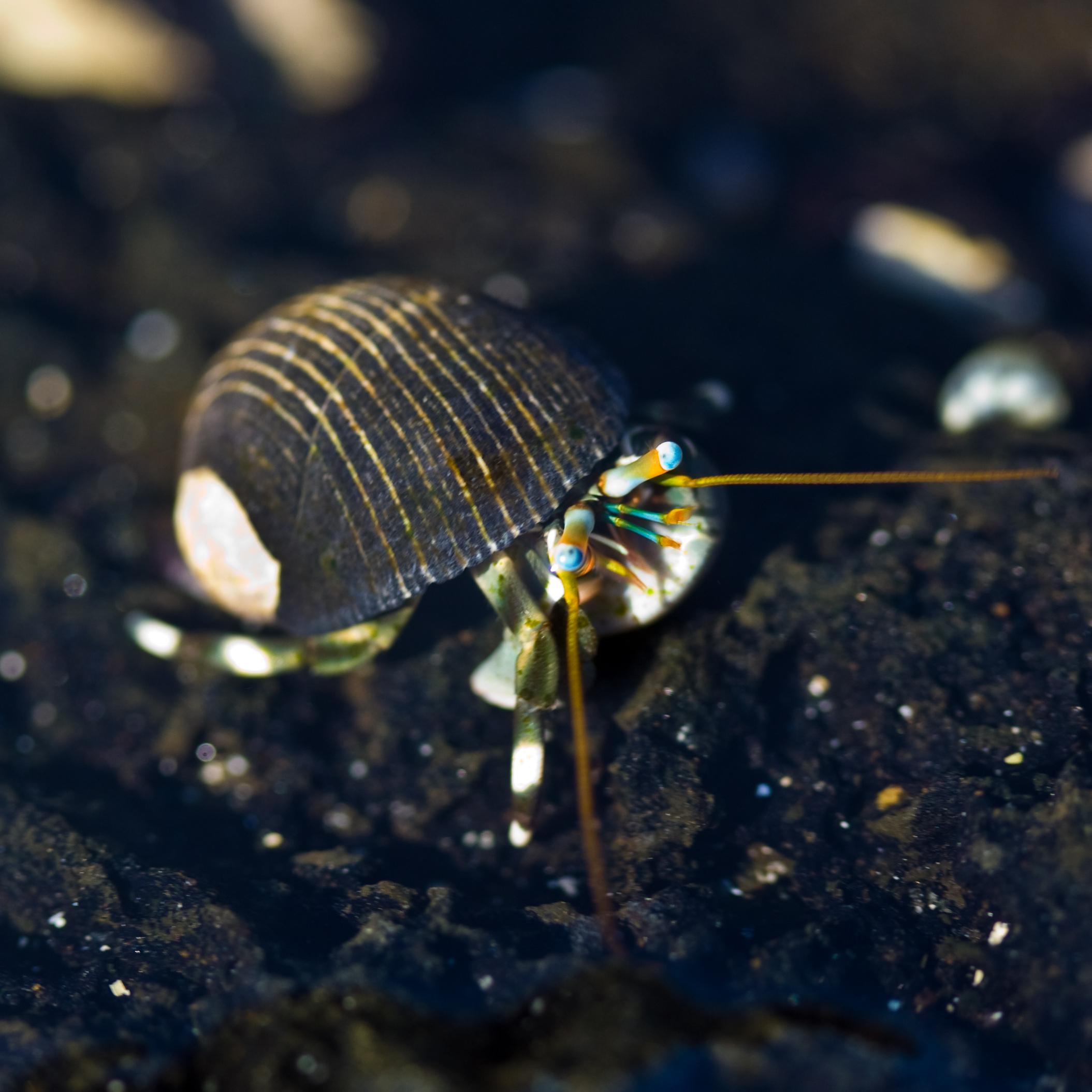
thorax, and abdomen. Whilethey are called crabs, their closest relatives are actually shrimps and lobsters, which also havethethreebody regions and a mandible, thehard crushing mouth part, and two pairs of antennae.
Dueto thevast number of hermit crab species, thereis quitea bit of variation between them. Most hermit crabs grow to around 1-2 ounces, or around an inch, though somehaveweighed in at 11 pounds. They also havea lifespan of up to 40 years in thewild.
Hermit crabs areomnivorous scavengers, meaning they consume plant and animal material. They typically favor macroalgaealong with microscopic mussels and clams. Becausehermit crabs do not breed well in captivity, theremay belimited knowledgeof their reproductive processes. TheCaribbean hermit crab, likemany animal species, has a very specific mating ritual. Large numbers of thesewetland creatures will head to theshoreduring mating season where, after fertilization, the femalewill eventually releasethe eggs near theshorelinewherethe eggs will then burst on contact with seawater, thelarvaefloating out to sea. Thesmall, shrimp-likelarvaewill
14 | Seawords
surviveoff of ocean plankton until they drift to thesea floor, where they morph into something that starts to resemblea hermit crab and quickly find a shell.

Hermit crabs facepredators likeevery other species. They can bepreyed upon by larger hermit crabs, as well as reef dwelling fishes, box crabs and even octopuses. However, plastic pollution is quickly becoming a major issuefor hermit crabs as well. A small pieceof plastic, such as a bottlecap, can resemblea shell and may beused as a homefor a
desperatecrab.
A study in 2020 by theJournal of HazardousMaterial recorded that over 550,000 hermit crabs diedueto plastic pollution annually. This study only looked at two islands off the South Pacific, so global numbers are likely much higher. This is in part dueto thepheromonehermit crabs releasewhen they die, letting other crabs know a new shell is available. However in thesecases, they areonly drawing thecrabs closer to danger. It is important that as humans wedo our part to protect hermit crabs as well as many other species from the effects of plastic pollution.
The Fab Hermit.Photo by:Ken-ichi Ueda;Flickr.
FEBRUARY- PEPELUALI 2023 | 15
Coastal Tourism and Coral Reef Degradation in Hawai? i
 By: Chloe Molou, UHH Seawords Liason
By: Chloe Molou, UHH Seawords Liason
16 | Seawords
U.S.Tourism;Waik?k?,Honolulu, Hawai?i.Photo by:Edmund Garman/GPAPhoto Archive;Flickr.
Coral degradation in Hawai?i has been linked to increased coastal tourism in a study published last month in Nature Sustainability.A research team from Princeton University compared flyover maps of live coral cover to geotagged Instagram posts to see how coastal tourism impacts coral cover and degradation.

Led by Dr.Bin Ling, the team found higher total live coral cover in areas where only on-reef visitations, like scuba diving and snorkeling, were frequent.These locations were also found to have better water quality as compared to places where coastal visitations, like beach visits and hotel parks, where effluent was more concentrated.
Hawai?i poses as the ideal location for this study, as outlined in the paper, as most coastal areas are accessible by road as it is common right law to have public access to the shoreline.Many of these coastal locations also have cellular coverage that is taken advantage of by most tourists to post images on social media.
Dr.Ling and the team took advantage of the popularity of Instagram specifically and used social media data to provide estimates of coastal tourism in the main Hawaiian Islands. Over 275,000 public posts between 2018 and 2021were collected from 333 bays and beaches throughout the islands - over 9,000 of which were categorized as on-reef
FEBRUARY- PEPELUALI 2023 | 17
visits with the use of hashtags and caption keywords,e.g., #scubadiving.
Site visitations were compared to live coral cover using flyover maps, as well as water quality, human activity, and accessibility of the site.They analyzed the relationship between ref conditions and coastal tourism rates using a high-resolution geospatial approach and found a positive correlation between visitation numbers of total live coral cover.
Live coral cover is an indication of the effects coastal and on-reef visitations have on coral health.Coral growth was found to be suppressed closer to shore where most tourism is concentrated,
highlighting the detrimental effect that people can have on corals.Honolulu County was found to have some of the largest areas of degraded reefs, including Waik?k?Beach,Waimea Bay, and Shark's Cove in P?p?kea.
The study provides evidence of the negative direct and indirect impact of coastal tourism on coral reefs in Hawai?i, as they are the biggest drivers and victims of this industry.The team suggests that future conservation efforts should prioritize strong reef-protection policies, as well as implementing restoration measures for areas with high traffic coastal tourism and direct on-reef visitation impacts.
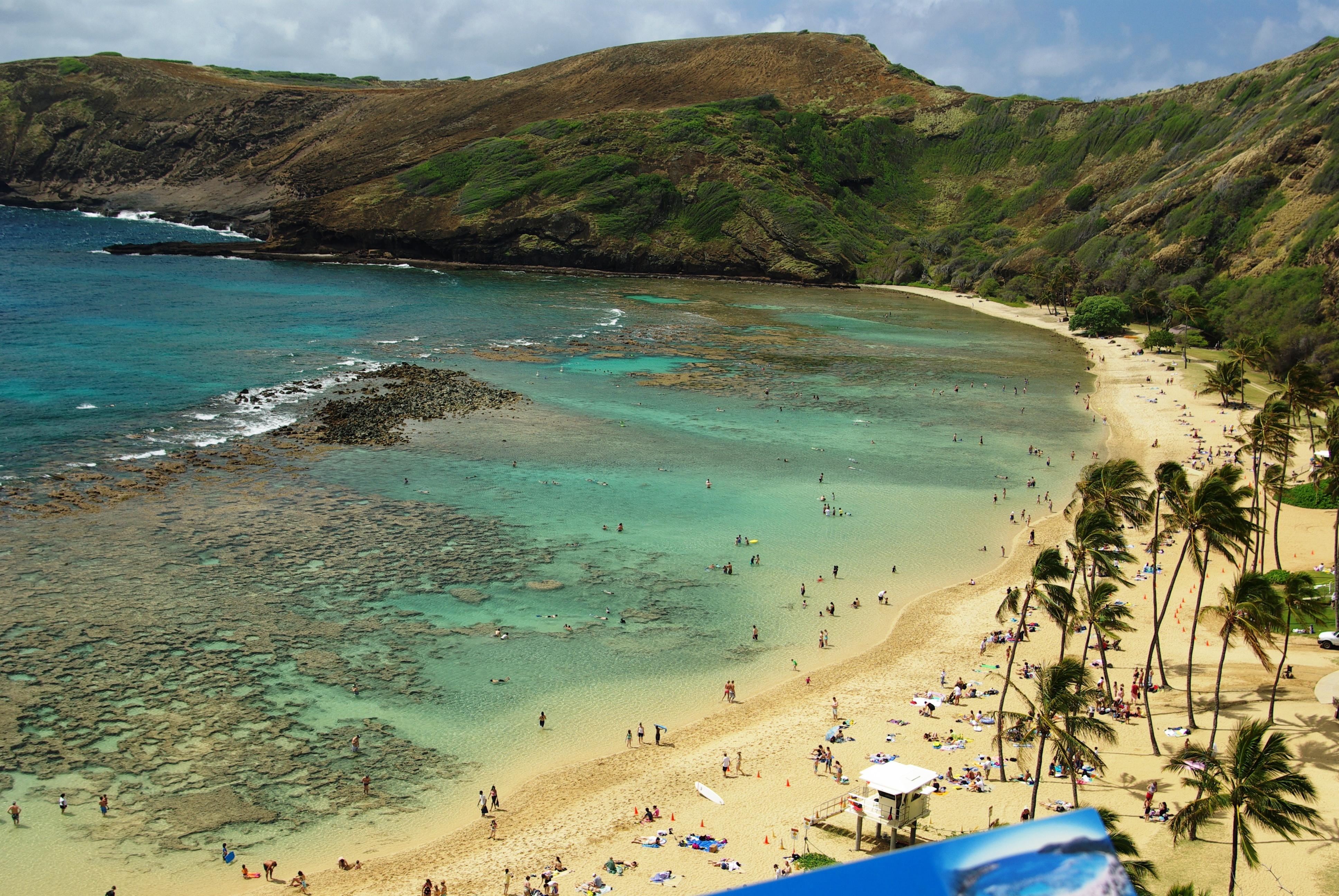
18 | Seawords

FEBRUARY- PEPELUALI 2023 | 19
Hanauma Bay.Photo by: Kate Ure;Flickr.
Marine SciencE applied to space
 By:Alexandrya Robinson,UHMMOPStudent
By:Alexandrya Robinson,UHMMOPStudent
20 | Seawords
Blue oceancaptured from the International Space Station.Photo by:Scott Kelly/NASA; Wikimedia Commons.
Especially whenlivingin Hawai?i,it isn?t hardtoglanceout towardtheshoreandnoticethe vast expanseof water beforeyou. Oceanicknowledgegatheredover theyearsby dedicatedmarine scientistshasnot only increased our understandingof theworld aroundus,but hasprovideda blueprint for theoriginsof lifeon our planet.What if thesame principlesusedin marinesciences couldbeappliedtospaceinthe ongoingmissiontofind lifebeyond our planet?
In2016 theCongressional Commerce,Justice,Science,and RelatedAgenciesAppropriations Bill wassignedintoaction.Thisbill aimedtohelptheNational AeronauticsandSpace Administration(NASA)tobegin their searchfor lifebeyondEarthas well asfor planetshospitableto humanlife.NASA?sOuter Planets Assessment Group?s(OPAG)main focusistousegathereddatafor planet explorationinconjunction withtheRoadmapstoOcean Worlds(ROW)whichusesocean researchtoinformdecisionsfor
explorationof oceansonother planets.

Thesearchfor inhabitableplanets andoceanlifeisbased onour scientificunderstandingof how oceanswork hereonEarth.Inour solar systemalone,theROW team hasidentifiedpotential research candidatesbasedoncurrent spacecraft observationsof many celestial bodies.PlaceslikeEuropa, Ganymede,andCallisto,whichare someof Jupiter?smoonshave knownbodiesof water that could harbor lifebasedonknownEarth biology.
Therearealready plansfor Europaexplorationinthenear future,includingtheEuropaLander missionwhichisslatedfor 2025, andtheEuropaClipper missionset tolaunchin2024,whichwouldbe ideal for gatheringmoredata.In addition,thisyear theESA JUICE missionisset tolaunchout to explorethemoonsof Jupiter and ultimately endupinorbit around Ganymede.
EnceladusandDione,moons of Saturn,arealsoideal candidates
FEBRUARY- PEPELUALI 2023 | 21
for explorationduetomeetingthe standardof havingany formof liquidocean.TheCassini spacecraft wasabletogather measurements that showedEnceladushasahigh potential for sustaininglife.Pluto andCeres,whicharedwarf planets, show subtlesignsof alsohaving oceanswhichhaveallowedthemto makethelist of candidatesfor exploration.Additionally,twoof Uranus?smoons,Ariel andMiranda, haveshownsignsof interior oceans whichcouldallow for lifetoexist althoughcurrently thereismore researchneededtodetermineif thesemoonswouldmakefor promisingresearchsites.
Triton,aMercury moon,has shownsignsthat haverankedits explorationthehighest priority for researchbecauseof thesurface andsubsurfaceliquidthat hasbeen observedaswell astheorganic moleculeswhich,muchlikeEarth, areperfect for carbon-based lifeforms.TheVoyager spacecraft hasalready sent databack that wouldsupport amissiontoTriton for explorationduetotheactivity onthesurfaceof thismoon.Many
surfacelakeshavebeensurface lakeshavebeenaswell aslakesof methane.Currently,theDragonfly mission,whichisset for 2027 will be searchingfor lifeonTriton.
All of thesebodiesarebeing studied andinvestigatedby ROW to makethebest decisionof whereto beginin-depthresearchfirst. Identification,classificationof the oceans,potential inhabitability,and thepossibility of lifealready present all aredecidingfactors.Interagency coordinationaswell asresearch withother agenciessuchasthe EuropeanSpaceAgency (ESA)is integral for understandingour vast spaceandthepossiblespeciesliving withinit.Already thelist of possible planetsandmoonshasgrown outsideof what previously was understoodof lifeoutsideof Earth.
If thereissignificant proof of an expansionof what constitutesthe ?goldilockszone,?or thehabitable areawithinthesolar system,it wouldexpandandfundamentally changewhat weknow about the limitsof life.Keepyour eyestothe sky for thepotential discoveries fromoceansmillionsof milesaway.
22 | Seawords

FEBRUARY
| 23
Saturn'smoon Enceladuscaptured bythe Cassinimission.Photo by:NASA/JPL/Space Science Institute;Wikimedia Commons.
- PEPELUALI 2023
Oxygen Minimum Not
 By:Lucian Anderson,UHM
By:Lucian Anderson,UHM
24 | Seawords
Bubbles.Photo by:Dean Crochere;Flickr.
Minimum Zones: Not All Bad
Oxygen is an essential component for most life not only on land but in the ocean as well.Oxygen is not spread evenly throughout the ocean as some may assume.There are factors that can affect oxygen in bodies of water such as too much organic material which causes oxygen depletion.Areas in the ocean with low amounts of oxygen are called Oxygen Minimum Zones.Areas without oxygen are called Oxygen Depleted Zones.
Oxygen Minimum Zones (OMZ) are not inherently bad. They are an essential component of the nitrogen and carbon cycle in the ocean. OMZs experience a rain of organic material (algae, animal remains,nutrients, runoff material,etc.).Bacteria and archaea use oxygen to consume the organic matter. Deep sea oxygen levels are dependent on the oxygen

UHM MOPAlumnus
FEBRUARY- PEPELUALI 2023 | 25
acquired at the surface and the oxygen used by archaea.
A scenario that is being studied is how climate change might affect Oxygen Minimum Zones.Modeling has not been clear on this until recently.A team from Princeton led by Laure Resplandy,a biogeochemical oceanographer and an assistant professor of geosciences at the High Meadows Environmental Institute at Princeton,thinks that they can predict the OMZ expansion in the East Pacific Ocean.They stated,?this is significant for two reasons:for one,as oxygen levels go down, vital economic species like tuna and crabs won?t be able to feed,swim or reproduce unless they relocate to ocean regions with more oxygen.This has major implications for ecosystems near the ocean?s coasts and the industries that depend on them,from fishing to tourism.Second,OMZs are a
significant source of nitrous oxide,a major greenhouse gas.?
Earlier climate models displayed inconsistent trends, both positive and negative, with Resplandy noting,?for 15 years,we?ve been circling around the same conundrum: with global warming,the ocean is losing oxygen,so we expect oxygen minimum zones to expand,but our climate models showed inconsistent trends.?Resplandy thinks that the current climate models displaying and predicting the size of OMZs are much more accurate.Changing to more layered thought processes regarding OMZs is what Resplandy believes helped, coupled with new modeling systems.
The current prediction is that OMZs will grow.By 2050 they could be as much as .6%of the world's ocean volume.The OMZs growth would affect commercial species like tuna.
26 | Seawords
OMZs have a core where the oxygen is at its lowest.The surrounding layer around the core is predicted to expand, with the core contracting.
OMZs create nitrous oxide so the contraction of the OMZ does mean less nitrous oxide will be released into the
atmosphere.According to paleo-oceanographers,possible events similar to this phenomenon occurred during warm periods 15-50 million years ago.As of right now,the data show that the OMZ cores are shrinking despite global warming.

FEBRUARY- PEPELUALI 2023 | 27
Marine nitrogencycle and the effectsof anthropogenic activitiesonOxygenMinimum Zones(OMZs).New researchsuggeststhat although OMZsare predicted to grow,theircoreswill contract,leading to lessnitrous oxide being released into the atmosphere.Diagram by:Silvia Pajaresand Ramiro Rames;Wikimedia Commons.

28| Seawords

FEBRUARY- PEPELUALI 2023 | 29
Volume XXXVIII,Number 2
Editor: Abbie Jeremiah
Dr.Cynthia Hunter (eminence grise) Jeffrey Kuwabara (eminence grise)
Writing Team: Chloe Molou,Lucian Anderson,Alexandrya Robinson, Haley Chasin,Abbie Jeremiah,Sofia FloresPina,Sara McGhee
Seawords- Marine Option Program
University of Hawai?i,College of Natural Sciences
2450 Campus Road,Dean Hall 105A
Honolulu,HI 96822-2219
Telephone:(808) 956-8433
Email:<seawords@hawaii.edu>
Website:<http://www.hawaii.edu/mop>
Seawords isthe monthly newsletter newsletter of the Marine Option Program at the University of Hawai?i.Opinions expressed herein are not necessarily those of the Marine Option Program or of the University of Hawai?i.

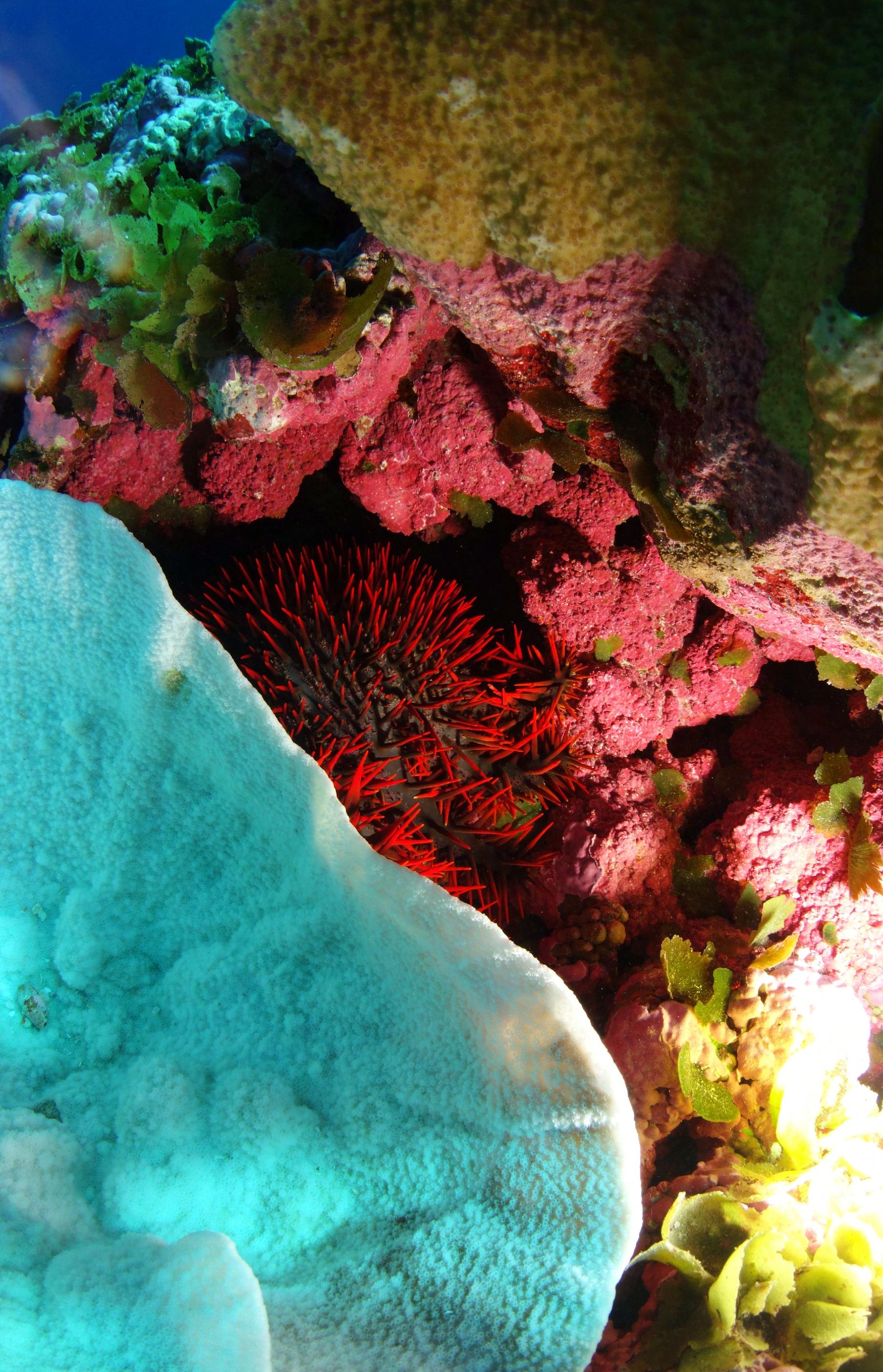
Suggestions and submissionsare welcome.Submissions may include articles,photography,art work,or anything that may be of interest to the marine community in Hawai?i.and around the world.
All photosare taken by MOP unlessotherwise credited.
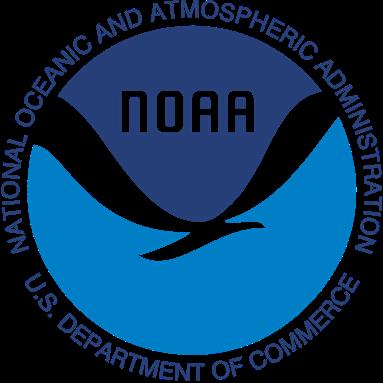


 AbbieJeremiah, Seawords Editor
AbbieJeremiah, Seawords Editor


 By: Haley Chasin, UHM MOP Alumna
By: Haley Chasin, UHM MOP Alumna

 By: SofiaFlores-Pina, UHMMOPStudent
Sponge Surface.
By: SofiaFlores-Pina, UHMMOPStudent
Sponge Surface.

 By:SaraMcGhee,UHMMOPStudent
By:SaraMcGhee,UHMMOPStudent

 By: Chloe Molou, UHH Seawords Liason
By: Chloe Molou, UHH Seawords Liason

 By:Alexandrya Robinson,UHMMOPStudent
By:Alexandrya Robinson,UHMMOPStudent

 By:Lucian Anderson,UHM
By:Lucian Anderson,UHM




